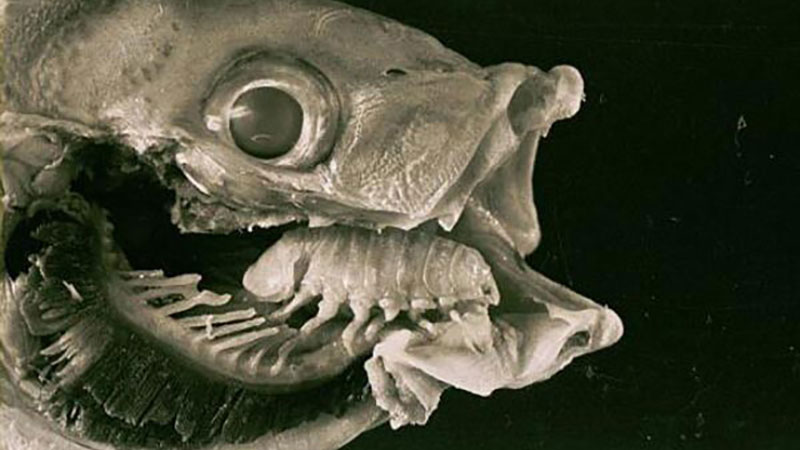December 14, 2020: Parasitic Isopod

Image copyright of Matthew R. Gilligan, Savannah State University. Download larger version (jpg, 213 KB).
Isopods are an order of marine invertebrates (animals without backbones) that belong to the greater crustacean group of animals, which also includes crabs and shrimp. Isopods are one of the most morphologically diverse of all the crustacean groups. They come in many different shapes and sizes, from micrometers to a half meter in length. They also live in many different types of habitat, from mountains and deserts to the deep sea. The most familiar isopod is probably the terrestrial pill bug (sow bug or woodlouse), which can be found scurrying around any backyard in moist, dark conditions.
About half of the known species of isopods live in the ocean. Some are large and spiny and live in the deep sea, while others live in shallow coastal and shelf waters, moving around on the seafloor or living in plants.
And some species of isopods live parasitically on fish, either externally or internally. Cymothoid isopods — as imaged here — can live inside the mouth of a fish. Scientists believe that these isopods hook their legs into the base of the fish’s tongue, causing the tongue to wither and eventually fall off, leaving room for the isopod to live (as creepy as it is, scientists believe this does not affect the fish’s lifespan!).
Learn more about isopods in this Ocean Fact.